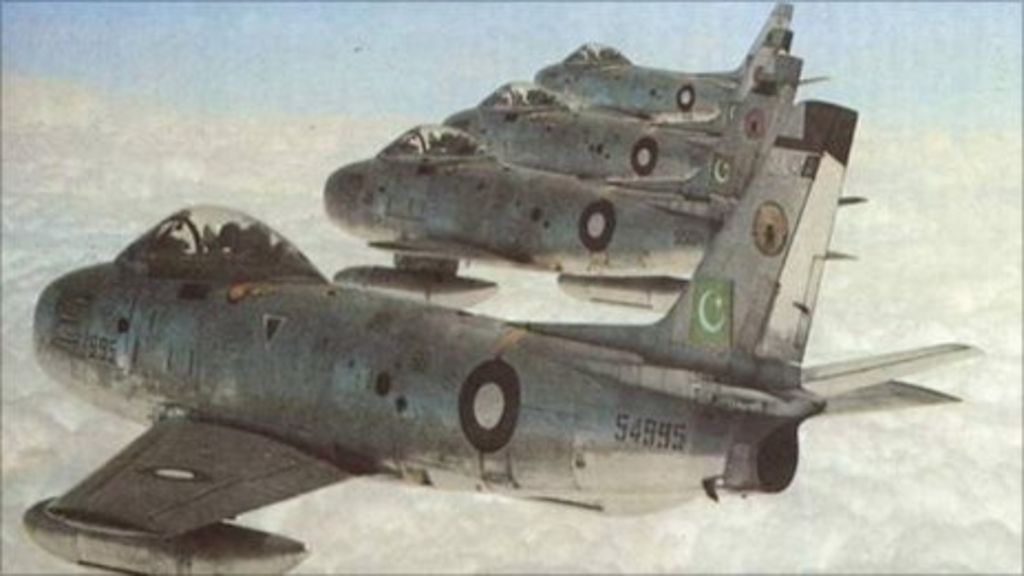Evary year to those of us in Pakistan, September reminds of the finest techniques of air power employment and its role in the outcome of the 1965 war. The war was unique as it was fought between two countries whose air forces were carved out of the same parent organisation, the Royal Indian Air Force. Their culture, training, manpower etc were supposedly of the same standards, just 18 years before the war.
However, despite having roots in the same institution, performance of the two air forces was markedly different. When war broke out, the Indian Air Force (IAF) was three times larger than Pakistan Air Force (PAF). Yet, even with a smaller force, PAF outmanoeuvred and outsmarted its larger adversary. In fact, right from the beginning, battle for control of the air became one-sided, with PAF dominating the skies. Many still ask how such a small force managed to achieve this. PAF’s success is attributable to vision of its leadership, outstanding training standards and extremely motivated and professional airmen who set new standards of comradeship and valour.
The IAF fighter / bomber aircraft inventory comprised British, French, and Russian origin planes. However, Air Marshal Asghar Khan decided to induct F-86 Sabre as the mainstay supported by the F-104 Starfighter. This helped PAF pilots master their flying machines with more experience on the same aircraft. However, IAF did not enjoy this luxury as it comprised multiple origin aircraft. In the bomber category, IAF was operating Canberra and PAF was operating US origin Martin B-57, both comparable in performance.
Under the visionary leadership of Air Marshal Asghar Khan, PAF established its Fighter Leaders’ School in April 1958 at PAF Base Mauripur (renamed PAF Base Masroor in honour of its former Base Commander, Air Commodore Masroor Hussain) for advanced fighter training of its pilots. This was the forerunner of the present Combat Commanders’ School (CCS). The school helped aircrew to become hard-core fighter pilots proficient in employment of their aircraft to design limits with ease. Advanced fighter combat training and vast experience on one aircraft type gave PAF pilots an unbeatable advantage over their adversaries. Air Marshal Nur Khan, who had assumed command of the PAF before the 1965 war, proved to be a deserving successor to AM Asghar Khan. Observing developments across the border, AM Nur Khan put the PAF on high alert. Therefore, even before commencement of hostilities, PAF was fully prepared to counter enemy designs.
Given its larger size, the IAF was complacent and rather overconfident as it did not consider PAF to be of any consequence. However, right after the shocking aerial engagements on 1st September, 1965 when it lost four out of 12 of its Vampire aircraft, IAF leadership was forced to ground its 130 Vampire and 50 Ouragan (French Hurricane) aircraft. Only two PAF Sabre aircraft, piloted by skilful and valiant Sqn Ldr Sarfraz Rafiqui and Flt Lt Imtiaz Bhatti, caused a reduction of almost 35% in the IAF fleet with strategic impact on morale. This not only changed the number game, but also gave PAF psychological ascendency over its rival.
On 6th September, Indian Army attacked with an aim of capturing Lahore. PAF’s timely action caused heavy attrition on enemy armour, halted their advance, and provided crucial time to Pakistan Army to act. Thus, PAF’s timely and very effective intervention became the single factor in denying Indian Army’s General Chaudhry a cup of tea at Lahore Gymkhana that evening. During an aerial engagement against IAF aircraft supporting Indian Army, Sqn Ldr Sarfraz Rafiqui shot down a Hunter (first Hunter kill) before his guns were jammed. He however, decided to stay and support his formation and attained martyrdom.
On the same day, PAF undertook pre-emptive strike over Indian airfield at Pathankot and destroyed the newly acquired MiG-21 aircraft on the ground. Next day, PAF struck at the Eastern Airfield of Kalaikunda with similar results. Additionally, Sqn Ldr MM Alam also set a record by shooting down five IAF aircraft in less than a minute. On 6th and 7th September, PAF destroyed a total of 50 IAF aircraft in the air and on ground and damaged another eight aircraft. This resulted in PAF attaining air superiority and denying IAF any useful support for the Indian Army.
Owing to the limited number of Bomber aircraft, during the course of war, PAF modified and very successfully employed its C-130 transport aircraft for night bombing over Indian airfields.
PAF is credited with changing the course of the 1965 war, however, its story of professionalism, competence and successes did not end with that war. Despite being sanctioned repeatedly and denied advanced aircraft and weapons since that war, has always proven equal to the task over the past 56 years as demonstrated in 1971, and recently during the Balakot standoff. It has demonstrated its skills against three leading air forces of the world and has the honour of shooting down Russian and Israeli aircraft without any loss. PAF’s successes are owed to its successive visionary leaders, extremely high standards of training, innovative use of available resources and devotion, dedication and gallantry of its airmen.
The author is a retired Air Marshal of the PAF who served as Pakistan’s Air Adviser at New Delhi from 2002-2006, presently working as Director Strategic Defence and Security at Centre for Aerospace & Security Studies, Islamabad, Pakistan. This article was first published in The News. He can be reached at ashfaquearain58@yahoo.com
Image Source: Living Warbirds




